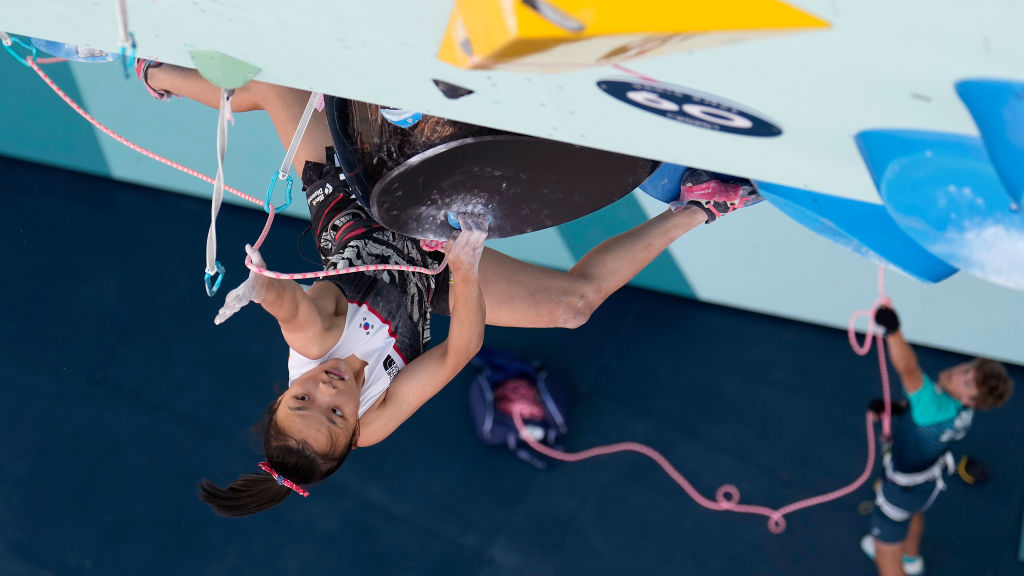The trek to Everest Base Camp was even tougher than I expected – I wouldn’t change a thing
Altitude aches, a chance encounter with Tenzing Norgay's son, unforgettable alpine starts on one of mountaineering’s most iconic destinations

Afternoon clouds hang low by the time we reach Tengboche monastery, bringing a welcome drop in temperature after the long climb up above 12,600ft. We pause at the ornate gates and, after warding off an overly interested yak with our trekking poles, our leader Sailesh asks another guide to snap a group picture for us. He obliges, then we pull off our hiking boots and hurry into the shelter of the hushed temple as the first drops of rain fall.
Inside, Sailesh turns to me and says, “That man who took our photograph? That was Tenzing Norgay’s son.”
Our encounter takes places five days before the 72nd anniversary of Tenzing Norgay and Edmund Hillary’s first ascent of Mount Everest. In 1953, the pair launched their successful summit push from Nepal’s Base Camp, and in the decades since, over 7,000 climbers have climbed to the top of the world’s highest peak, including Norgay’s son, Jamling, twice. But today, he’s doing the same thing as me – heading to the bottom of the mountain.

You don’t need to be a superhero to do this
A few months ago, an email arrived in my inbox inviting me to join the roughly 40,000 people each year who make the iconic pilgrimage to Everest Base Camp. It came from a Welsh company named Evertrek, founded in 2017 by Andy Moore, who started it after his own memorable first journey to the iconic mountaineering destination.
“I realized you don’t need to be a superhero to do this trek, and I knew I wanted to help other people achieve it,” he tells me as we sit at a picnic table in the sunshine in Namche Bazaar on the third day of our adventure, multicolored prayer flags fluttering overhead and local children playing among construction machinery that’s the only real clue of the damage caused by the devastating 2015 earthquake.
By 2023, Evertrek was bringing more people to Base Camp than any other company. It has gained a reputation for partnering with expert local guides and has a commitment to sustainability and safety, so I decided I’d be in good hands.
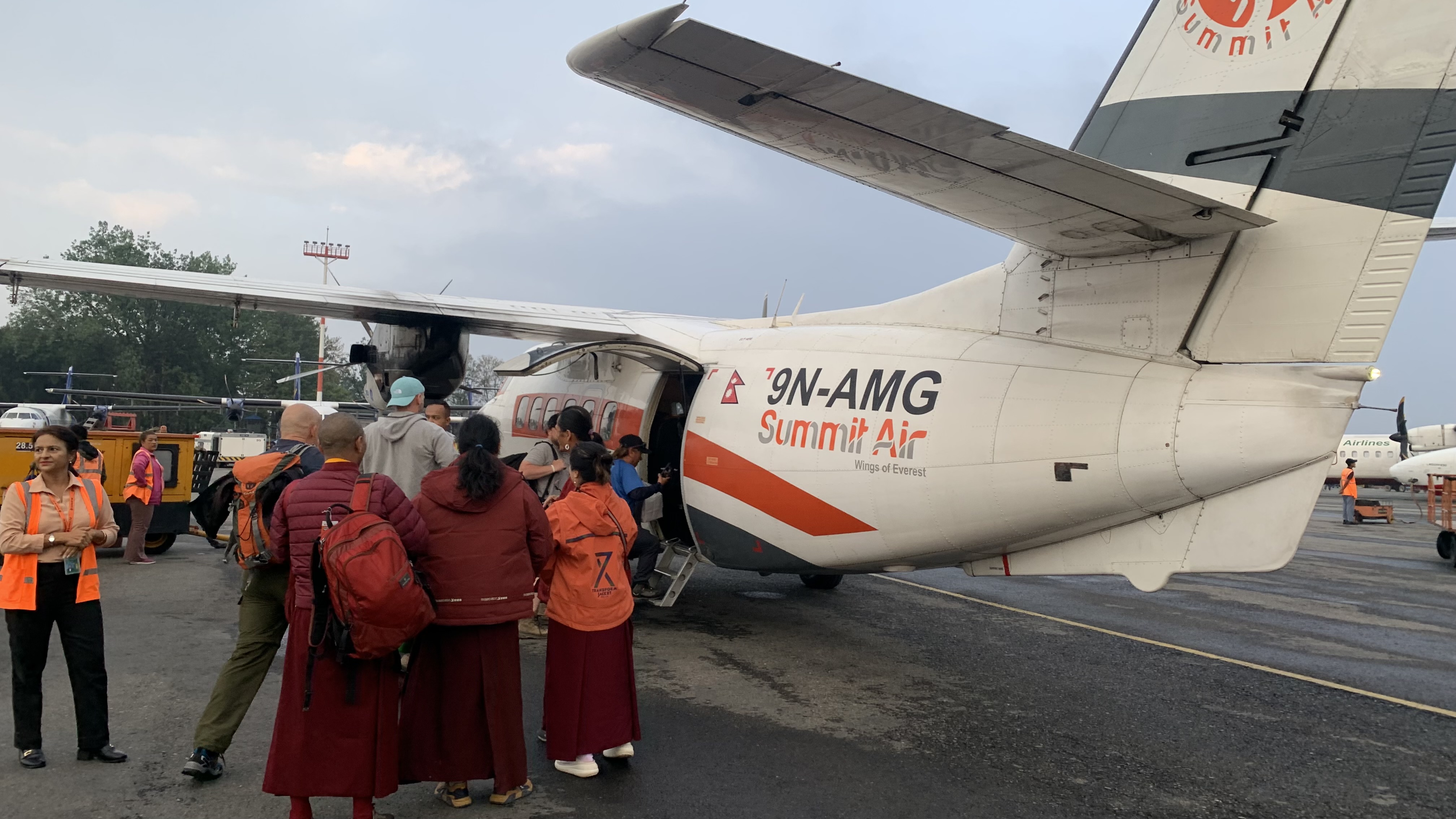
Four months later, I touch down in bustling Kathmandu and meet my teammates for the first time. Our captain is Rhys David, CEO of Evertrek, and we’re joined by former firefighter Royston O’Reilly, Gary Hutchings, who only weeks before had rowed solo across the Atlantic in 56 days, and Jonathon “Fox” Davies, a recently retired Welsh rugby star. They're not all lifelong trekkers, but they're no stranger to doing hard things.
All the latest inspiration, tips and guides to help you plan your next Advnture!
The following morning at 6am, we’re hustled onto a 20-seater Summit Air prop plane which takes off with a roar 10 minutes later, banking steeply over the green mountains dotted with the blue roofs of increasingly remote villages.
Just thirty minutes later, we appear to be flying disconcertingly into the side of a mountain, but at the last minute, we’re saved by the sudden appearance of an impossibly short uphill runway. Lukla airport has gained notoriety as the most dangerous in the world thanks to its inclusion in a History Channel show called Most Extreme Airports, but having survived it twice now, I’d call it the world’s most exciting.

A routine trek that's anything but
After an hour spent nervously applauding blood-curdling aviation maneuvers from a hotel perched on the diminutive runway, we pass the golden statues of Hillary and Norgay, and start down the trail. In Lukla, we spin the first of many ubiquitous Buddhist prayer wheels that we’ll encounter on the trek before passing through the Pasang Lhamu Gate, a tribute to the first Nepalese woman to summit Everest. Our adventure has begun.
I’ve spent the months leading up to the trek engaged in fairly serious preparation, racking up around 300 miles in the mountains which has got me in prime hiking condition, and allowed me to be certain my Lowa Renegade EVO boots are the right choice for the task ahead. But quickly, I realize that the trek to Base Camp is a bit like undergoing a routine surgery. Just because people do it all the time doesn’t mean it’s easy.
It’s not that the conditions are particularly challenging. We're lucky with the weather. Despite rainfall all around Nepal for the duration of our trek, my Rab Firewall waterproof pants, carefully selected for their light weight, never leave the bottom of my pack.
From the lush emerald terrain of the lower elevations to the stark glacial landscape at the end, the path is largely well-maintained, even if we frequently have to leap off it to allow a herd of yaks to pass. It’s amazingly well-serviced too, with lodges, restaurants, shops selling useful trekking gear, and public toilets everywhere. So much for that SheWee I packed.
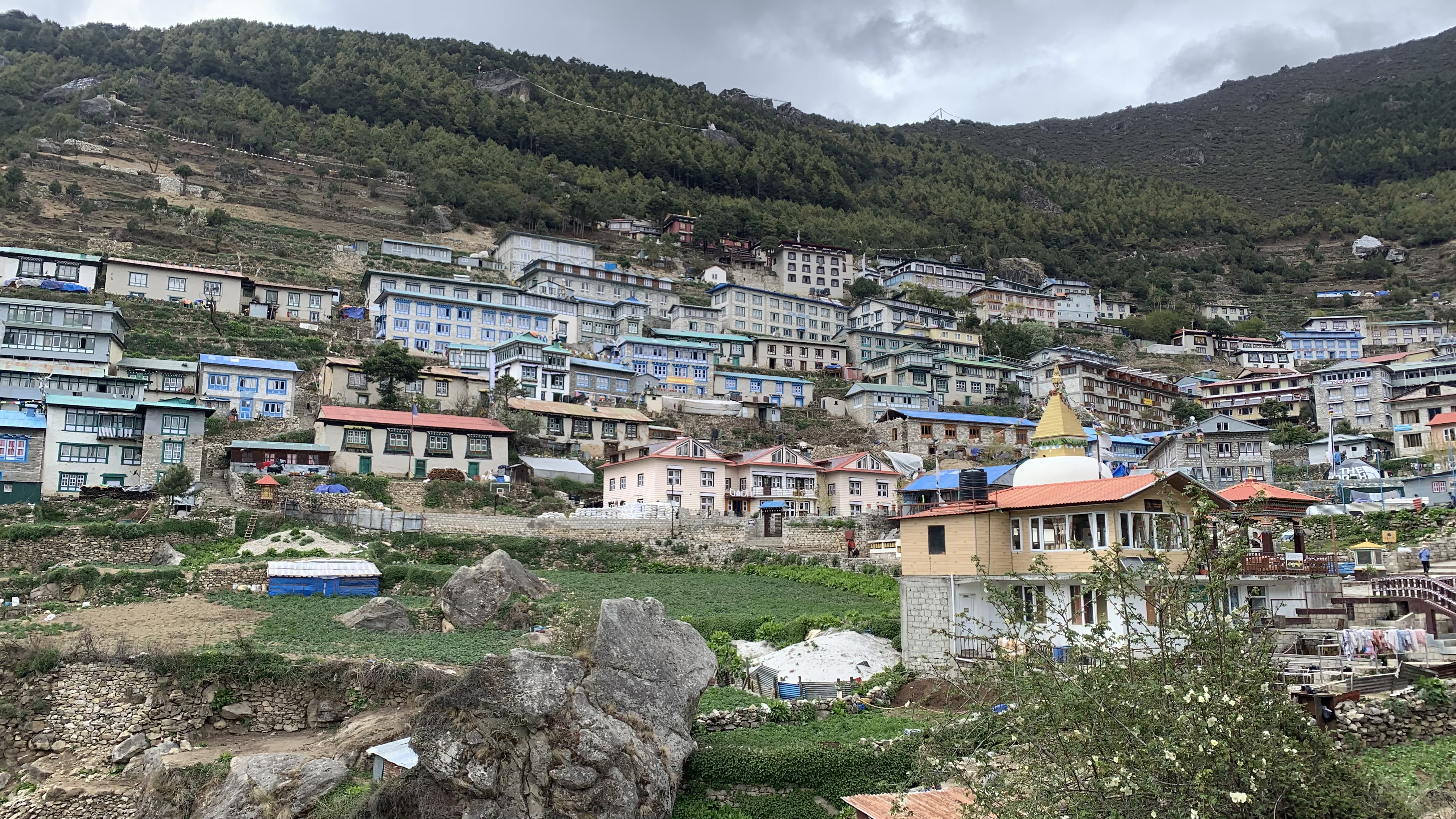
Vibrant Namche is the bustling heart of the Khumbu region, and here you can order a flat white or a wood-fired pizza (we do), have a massage (also yes), and watch mountaineering DVDs at the Liquid Room (unwisely, we choose Everest, 2015). The beds in the teahouses are generally comfortable, with proper pillows and fluffy duvets to supplement the warmth of my Big Agnes sleeping bagin the absence of central heating.
As we ascend, the accommodations grow more rustic and the toilets tend to be of the non-seated, non-flushing and slightly scary variety, but overall, the whole experience is far more comfortable than I’d have predicted.
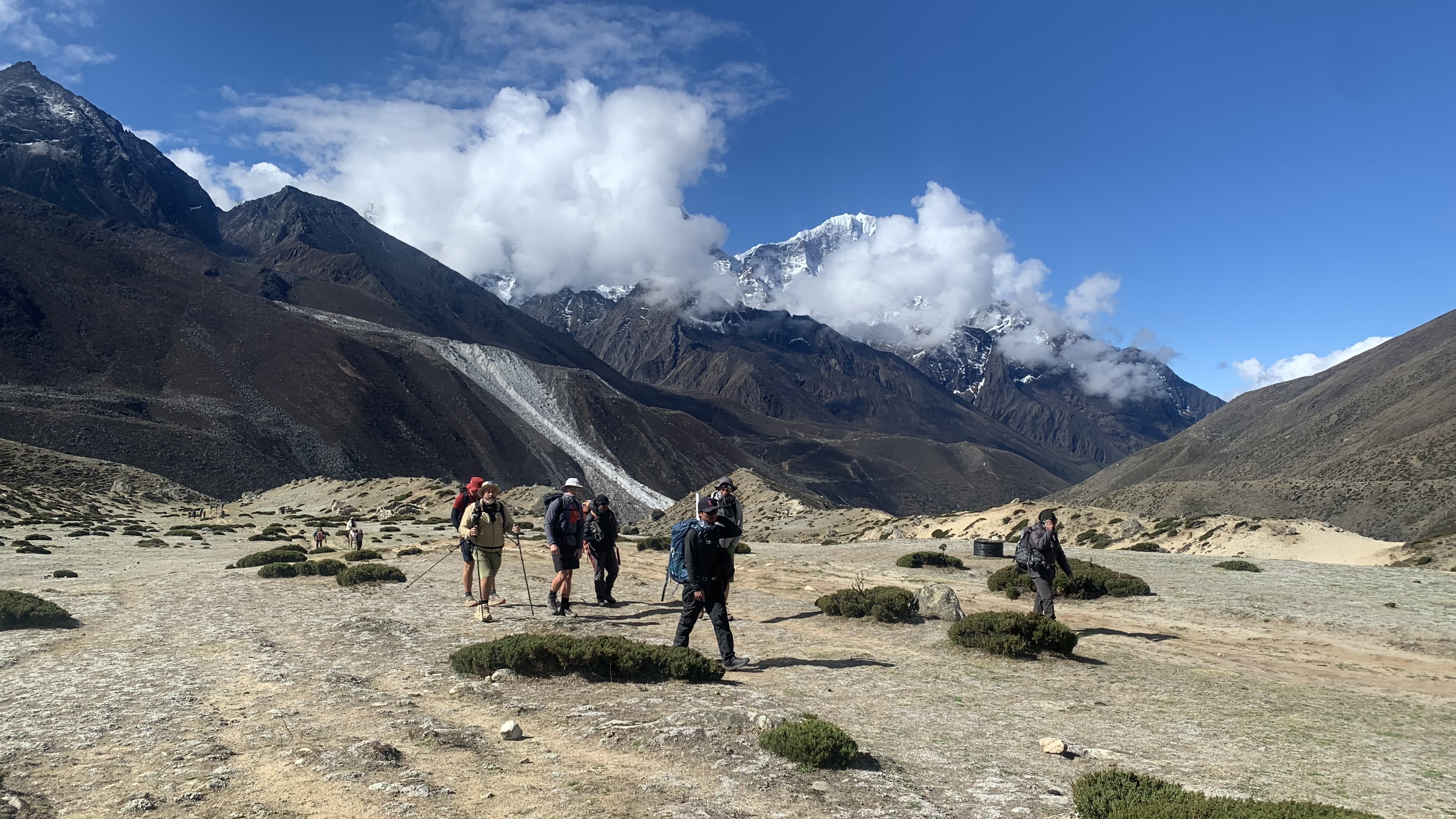
If you’re an experienced hiker – and you really should be to undertake this trek – it’s not the distance that makes things tough, though there’s often a deceptive amount of climbing with multiple ascents and descents in a single leg. The 40-mile approach takes eight days, including two acclimatization days. We spend about six hours a day on the trail, including stops for tea and lunch. Many trekkers opt for a helicopter ride out, and choppers buzz incessantly back and forth overhead, but after we reach Base Camp, we walk back to Lukla over three days.
My training pays off, and my legs feel fresh every day, but on the sixth morning, I wake up at 2am with the sinking knowledge that I’m going to spend the next few hours violently throwing up. Even with constant hand sanitizing and brushing my teeth with filtered water, bugs are easy to pick up in this environment. Within 24 hours, it’s passed, but it means the only way I’m getting to Base Camp is on electrolytes and sheer willpower.
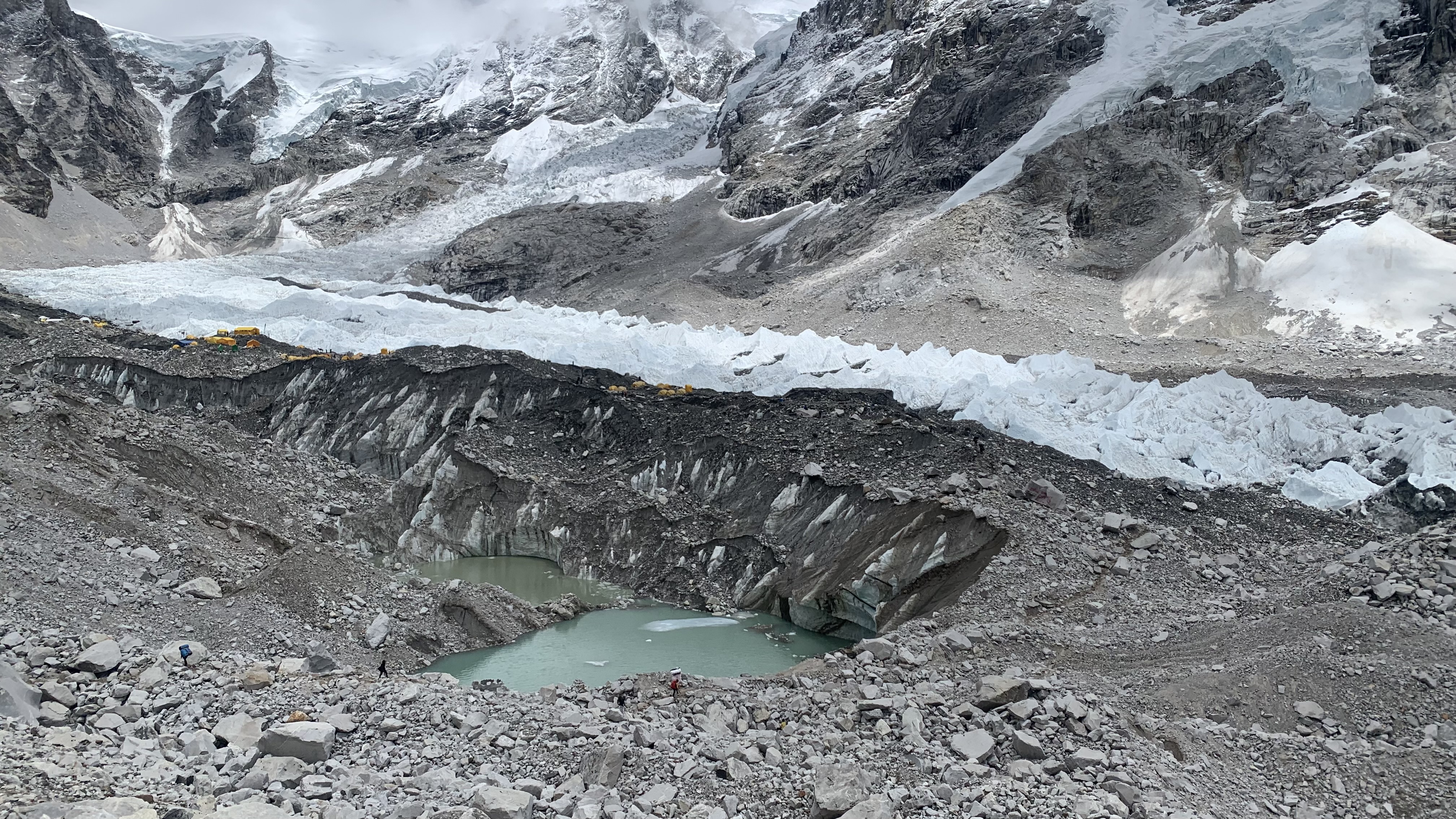
Nepal is not for beginners
For most, including us, the primary foe on the trek to Base Camp is elevation. The trek begins 9,383ft (2,860m) above sea level, so day one is a bit like dropping into one of Colorado’s highest ski resorts from sea level – high enough to elicit some symptoms in those who are sensitive. Everyone in our group ends up taking Diamox, a medication commonly used here to help offset the effects of altitude sickness, for at least part of the trek.
The day before we reach Base Camp, we take one last acclimatization hike from Leboche. I’m still weak from throwing up, so one of our guides carries my backpack. It helps, but my heart is pounding violently as we reach the ridgeline and catch our first glimpse of the extraordinary Khumbu glacier. He offers me my water bottle and as I take it, I look down and see that he’s nonchalantly done the entire climb in flip-flops.
“Nepal is not for beginners,” he grins. This, I think, sums it up.
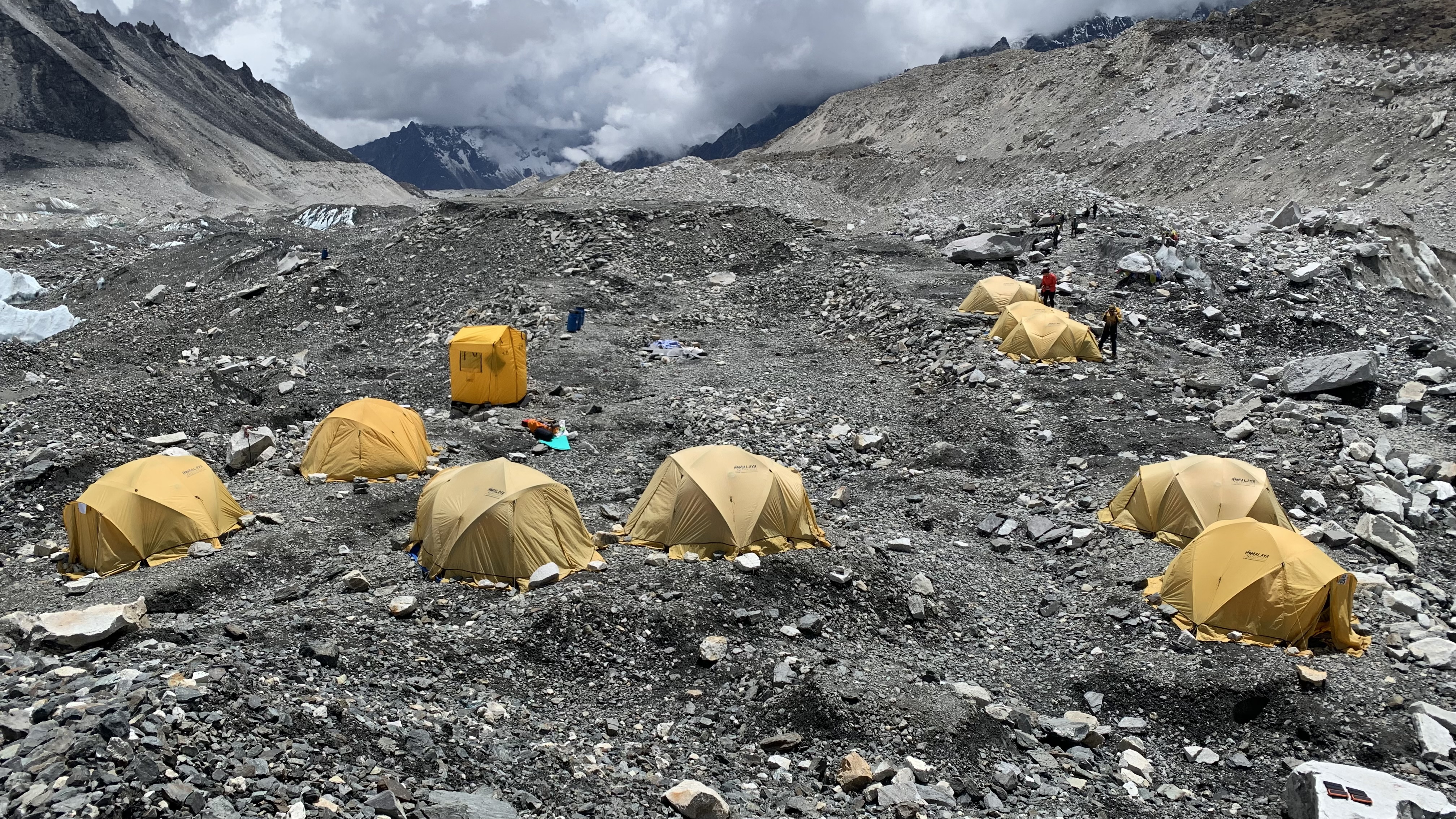
The power of the mountain
If you’re one of the unlucky ones who succumb to altitude sickness, your only option is to turn back, and when we reach Dingboche at 14,470ft (4,410m), we meet a fellow trekker who is doing just that, devastated after planning the trip for many months. Moore says the rates of clients not making it to Base Camp are low – only around five percent – but it’s a very real possibility for anyone who attempts the journey.
“This is the power of the mountain,” Sailesh tells us over and over, like he’s reciting a mantra, urging us to walk slower, drink more, and eat plenty despite the loss of appetite that comes at these heights.
The mountain, it seems, is on our side, and on day eight, our entire EverTrek team crunches across the glacier to Base Camp as waterfalls below us reveal the immense depth of the ice. It’s the end of May and we find the majority of summit teams have packed up, having either successfully stood on the highest point on the planet or given up trying. Still, a smattering of bright yellow tents remain defiant against the unforgiving landscape of rock and ice that makes us feel we must have taken a wrong turn and reached the moon.
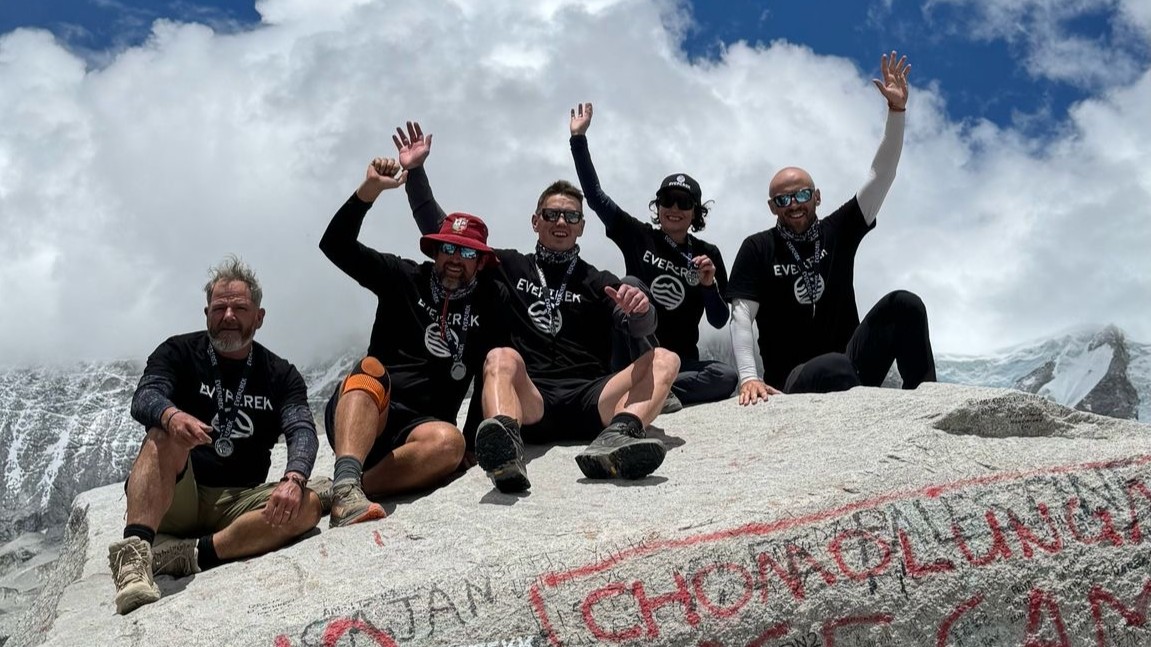
During peak climbing season, hundreds of tents are pitched improbably here on the west side of the highest glacier in the world. It’s impossible to ignore the distant cracking and whumphing of an avalanche as we stagger up to a large boulder where the words “Everest Base Camp” spray-painted in red have since last season been changed to “Chomolungma Base Camp” – the Tibetan name for the peak.
For a day or two now, I’ve been plagued by the same worsening headache as my teammates and, as it turns out, even our seasoned Nepalese guides. The best way I can describe it is akin to the worst hangover you’ve ever had, where each beat of your heart echoes painfully in your skull, making it hard to even turn your head.
The air is so thin here at 17,598ft (5,354m) that the night before, I was unable to perform even gentle yoga stretches without running out of breath. But in the end, elation overrides elevation and we clamber up onto the boulder for a group shot, knowing that all that lies ahead of us now is descent, more oxygen, and better sleep.
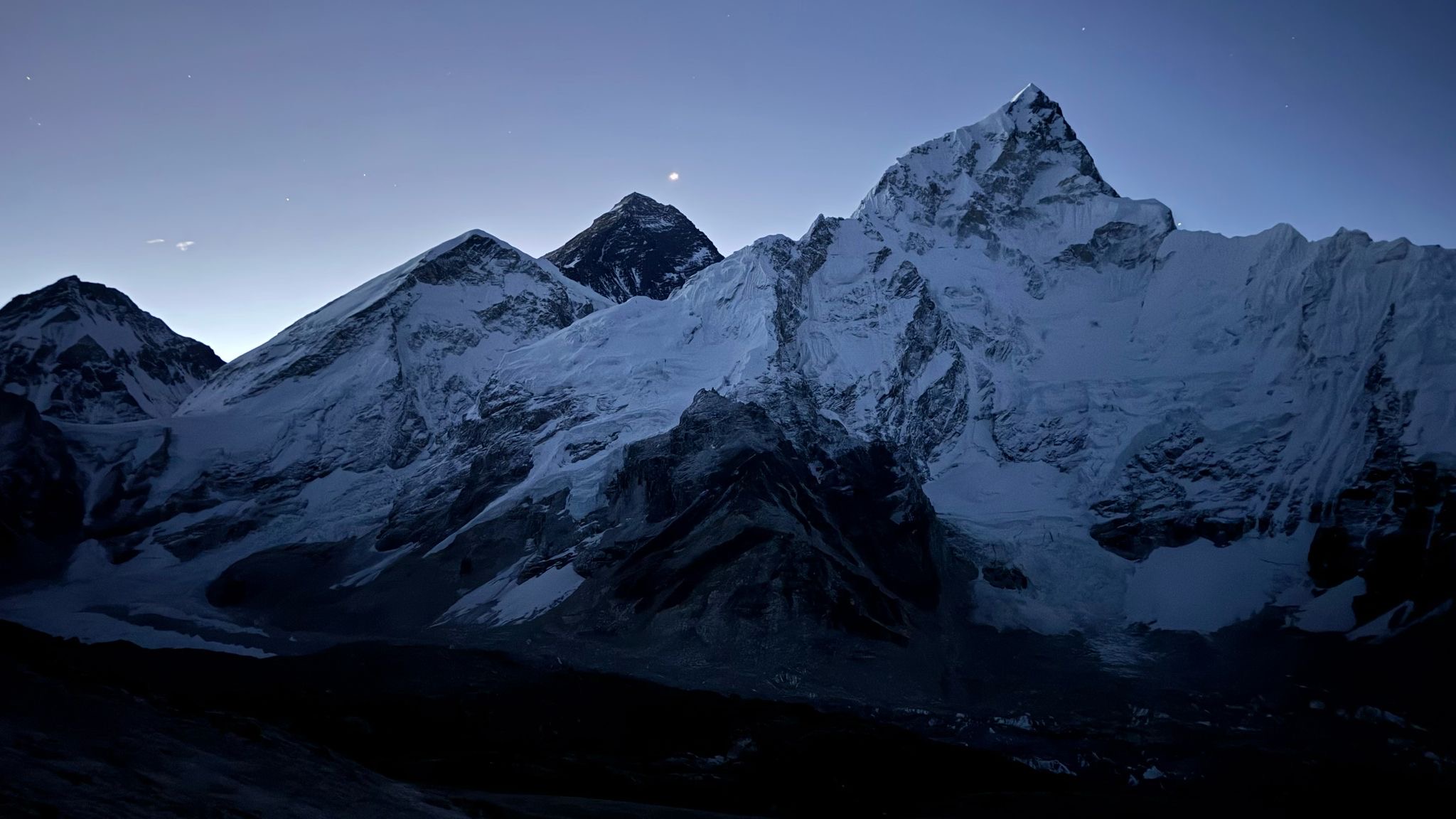
An alpine start
If someone had warned me I’d feel even worse the following morning, climbing Kala Patthar, I might have stayed in bed, but a sense of adventure gets the better of me. Myself and Davies meet our guides outside the teahouse at 3:20am. It’s pitch dark, cold enough that our breath billows out in huge clouds, and overhead a billion stars pierce the velvety sky, clear for the only night of our trek.
The climb isn’t far – just over a mile – but it’s straight up, taking us even higher than Base Camp. Davies goes ahead as I struggle to the ridgeline but when I turn around and see the snowy summits of Everest, Lhotse and Ama Dablam catch fire with the first light of dawn, I forget about the pain and plop down on a frosty rock nearly overcome with the spectacle.
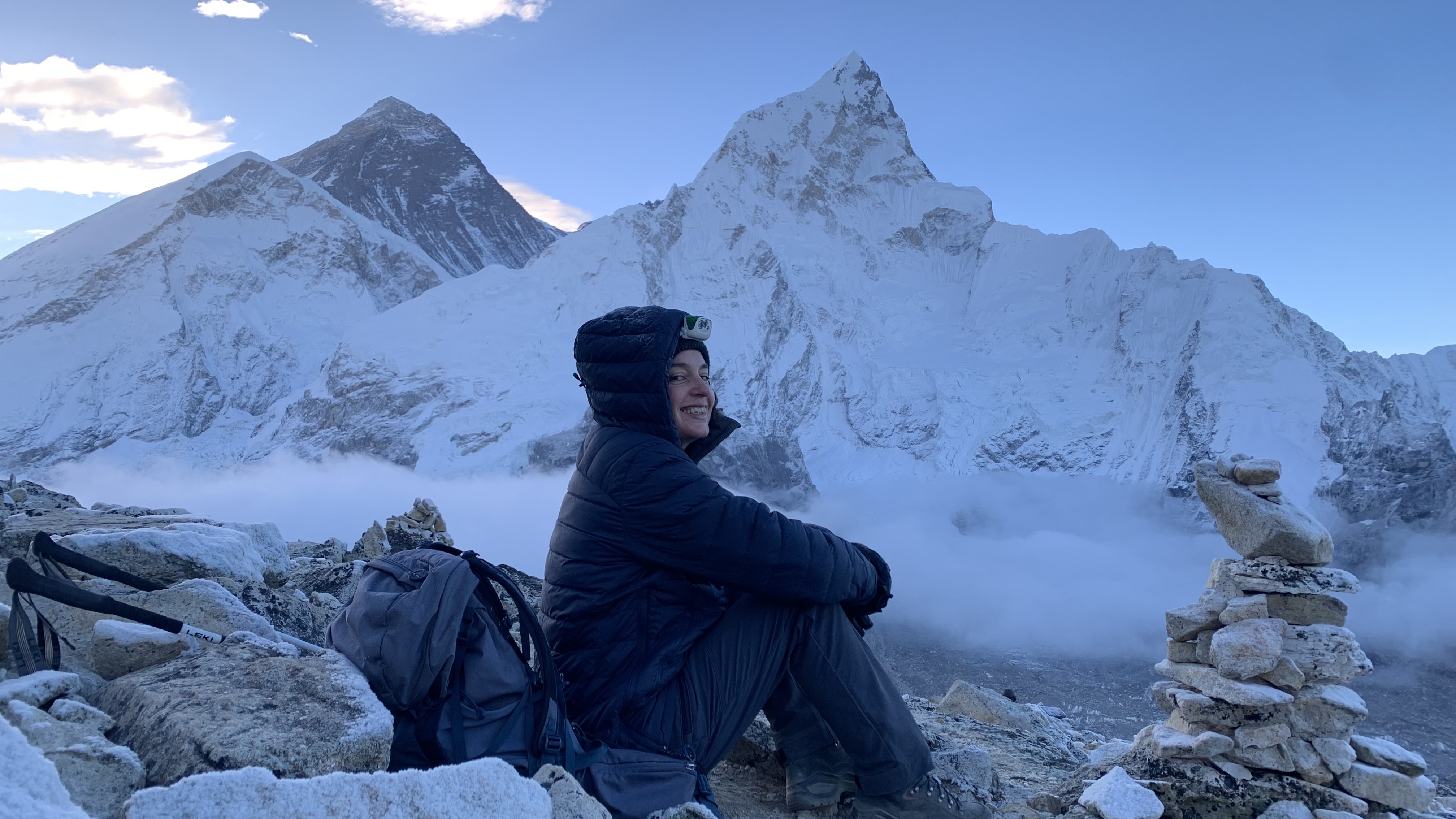
It’s pain, but it’s such sweet pain
That is the very crux of the trek to Everest Base Camp. It’s powerful precisely because it’s challenging, and every step seems to cement the knowledge that if it weren’t hard, we might not bother. Nepal’s very own Buddha taught that our attachment to pleasure and avoidance of pain is the source of all suffering. If we can embrace both suffering and joy without preference, he says, we’ll be free. Or as one fellow trekker put it as he limped into the teahouse after the gruelling second day, “It’s pain, but it’s such sweet pain!”
Around every corner is hidden magic – a Buddhist temple, a fluffy yak calf, a tumbling waterfall. Every afternoon, when we arrive at our lodge and flop down to hot tea and cookies, a persistent low low-hanging cloud obscures any hope of a view. But in the morning, we awaken to newly revealed delights – Themserku, Ama Dablam, Pumori, Lhotse, Makalu, Everest – suddenly impatient to be admired and glinting in the sunlight.
I mention this to my teammate Davies, who has a theory that I think perfectly sums up the way these peaks make you feel:
“I like to think it’s the mountain saying, ‘you’ve reached the goal for the day, so I’m going to hold the view. I don’t want to spoil tomorrow for you.”
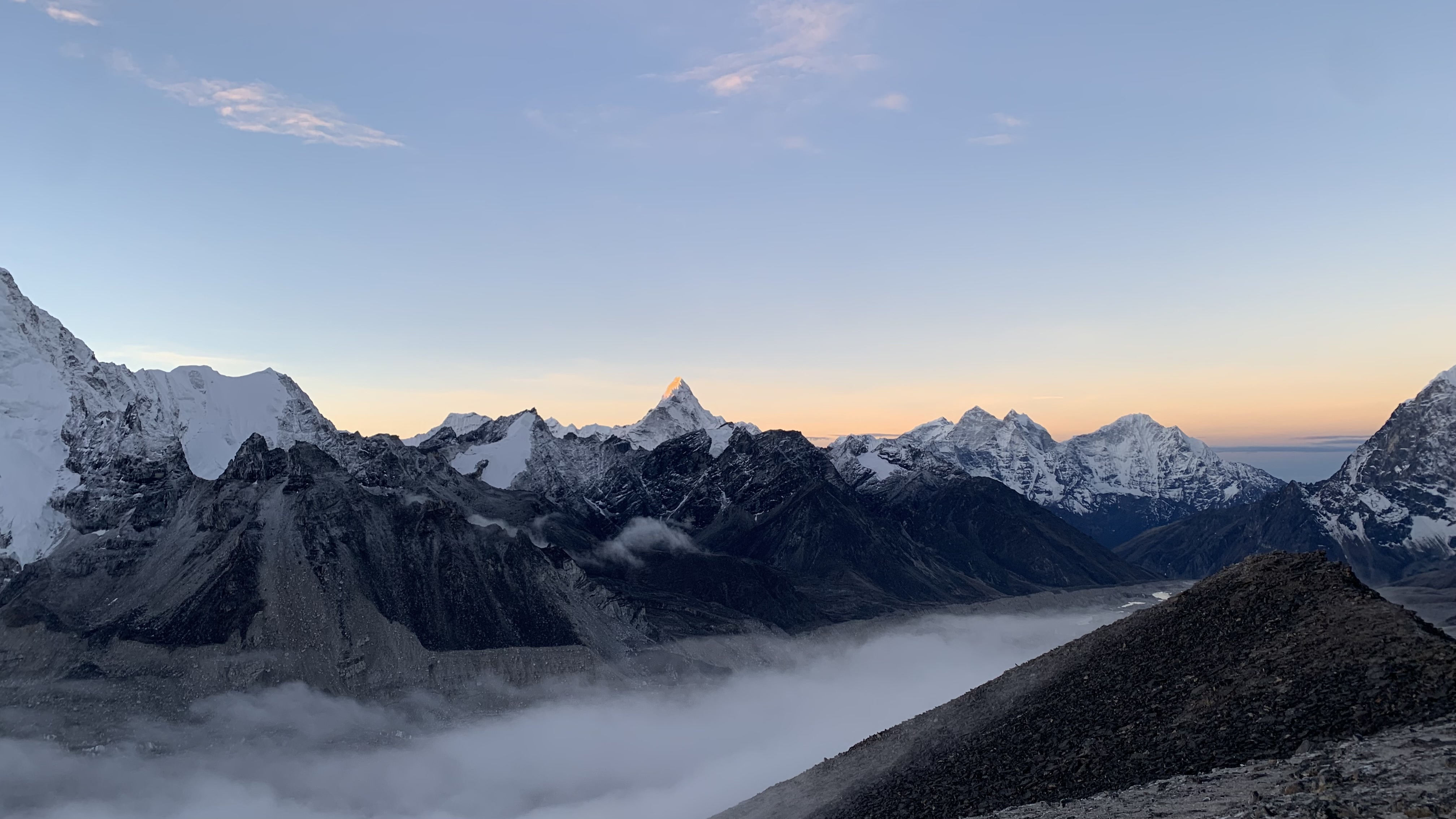
Planning your own trek to Everest Base Camp?
Still to come are more features with my best takeaways and tips for your trek to Everest Base Camp, but if you're packing now, check out my kit list for all the best gear.
Julia Clarke is a staff writer for Advnture.com and the author of the book Restorative Yoga for Beginners. She loves to explore mountains on foot, bike, skis and belay and then recover on the the yoga mat. Julia graduated with a degree in journalism in 2004 and spent eight years working as a radio presenter in Kansas City, Vermont, Boston and New York City before discovering the joys of the Rocky Mountains. She then detoured west to Colorado and enjoyed 11 years teaching yoga in Vail before returning to her hometown of Glasgow, Scotland in 2020 to focus on family and writing.

